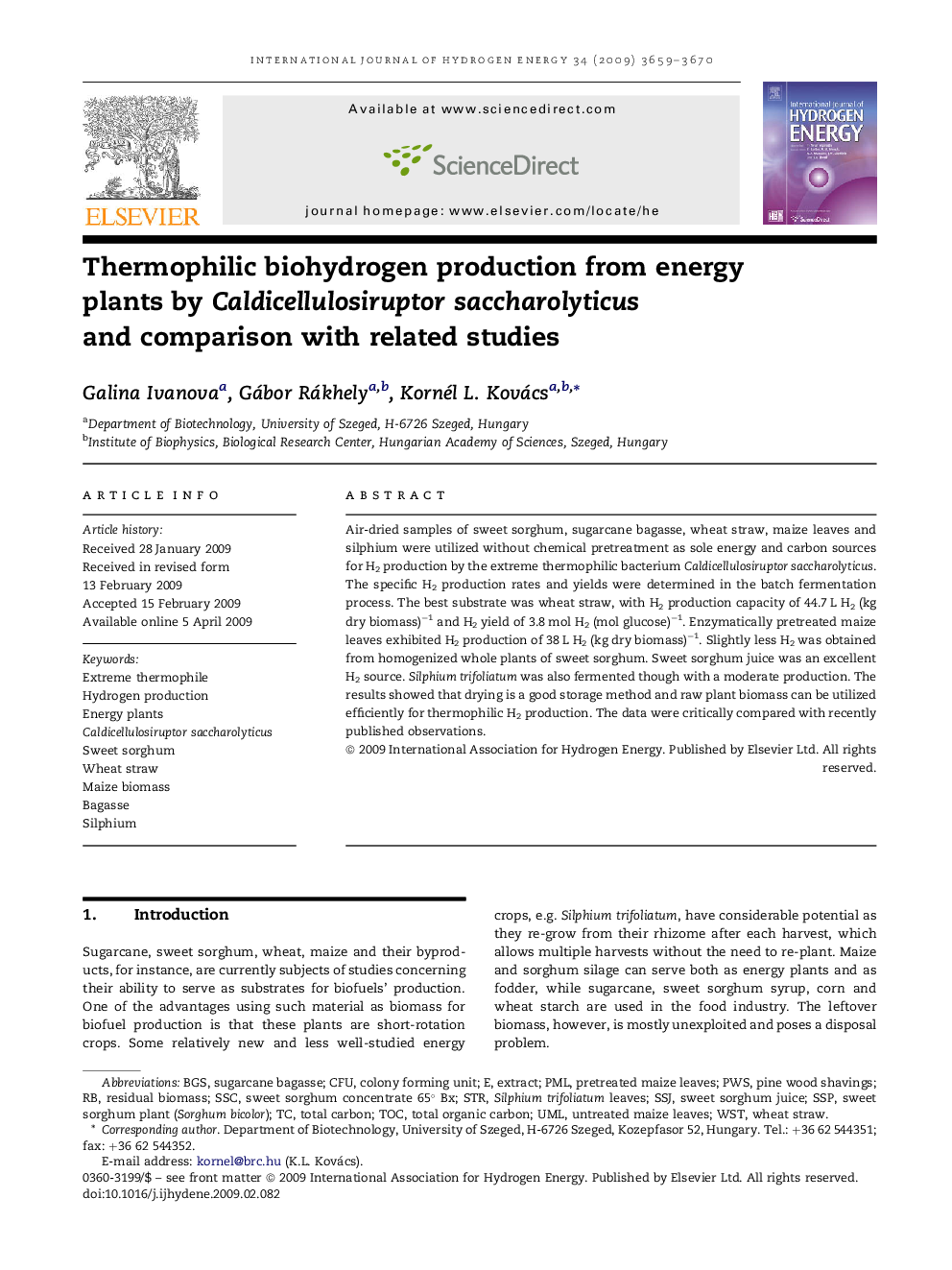| Article ID | Journal | Published Year | Pages | File Type |
|---|---|---|---|---|
| 1278996 | International Journal of Hydrogen Energy | 2009 | 12 Pages |
Air-dried samples of sweet sorghum, sugarcane bagasse, wheat straw, maize leaves and silphium were utilized without chemical pretreatment as sole energy and carbon sources for H2 production by the extreme thermophilic bacterium Caldicellulosiruptor saccharolyticus. The specific H2 production rates and yields were determined in the batch fermentation process. The best substrate was wheat straw, with H2 production capacity of 44.7 L H2 (kg dry biomass)−1 and H2 yield of 3.8 mol H2 (mol glucose)−1. Enzymatically pretreated maize leaves exhibited H2 production of 38 L H2 (kg dry biomass)−1. Slightly less H2 was obtained from homogenized whole plants of sweet sorghum. Sweet sorghum juice was an excellent H2 source. Silphium trifoliatum was also fermented though with a moderate production. The results showed that drying is a good storage method and raw plant biomass can be utilized efficiently for thermophilic H2 production. The data were critically compared with recently published observations.
